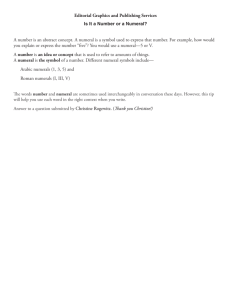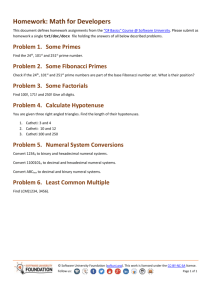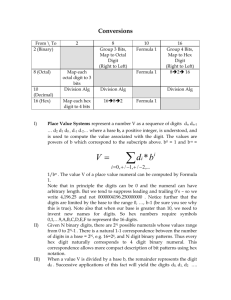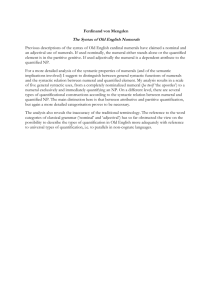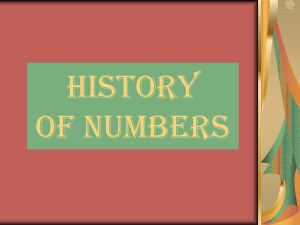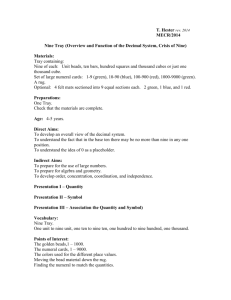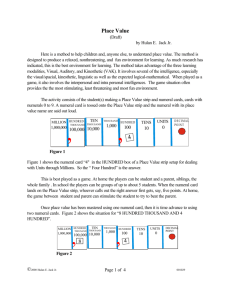PLACE VALUE NOTES
advertisement
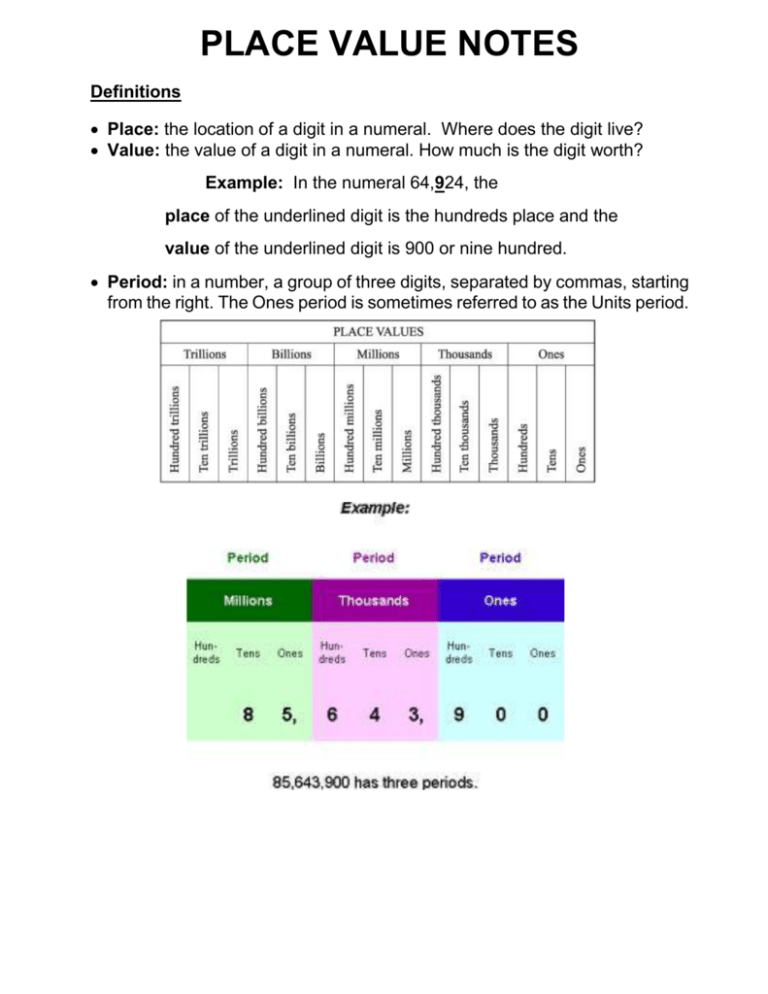
PLACE VALUE NOTES Definitions Place: the location of a digit in a numeral. Where does the digit live? Value: the value of a digit in a numeral. How much is the digit worth? Example: In the numeral 64,924, the place of the underlined digit is the hundreds place and the value of the underlined digit is 900 or nine hundred. Period: in a number, a group of three digits, separated by commas, starting from the right. The Ones period is sometimes referred to as the Units period. Numerals can be represented three ways: standard form, expanded form, and word form. standard form: a way to write a number showing only its digits. This is the form we are most familiar with and see most often. Example: 5,673,289 expanded form: number written as the sum of the values of its digits. This form identifies the value of each digit in the numeral. Example: 5,000,000+600,000+70,000+3,000+200+80+9= 5,673,289 If a place has a 0, it doesn’t need to be represented. In the next example, there are no hundreds and so they do not need to be represented in expanded form. If the non value place is included, it’s okay. Example: 4,017= 4,000+10+7 word form: a number written in words. In this form, a number is written using words only. However you would say/read the number provides you with the words you need to write for the word form. You also need to include commas separating the periods. If there are commas in the standard form, there must be commas in the word form. One place you will often find the word form of numerals in books you read. Example: five million, six hundred seventy three thousand, two hundred eighty nine Place value can help you compare and order numbers. By understanding the values of the digits in the numeral, you can decide which numeral is greater than (>), =, or less than (<). When comparing numerals, you need to look at the value and place of each digit. Look at the individual digits starting from the left and compare. Sometimes the highest place is the only place you need to look at. Example: 45,927 > 7,203 [ the numeral on the left has a higher place (ten thousands) and is therefore greater than the numeral on the right since its highest place is just thousands). This number sentence is read: forty five thousand, nine hundred twenty seven is greater than seven thousand, two hundred three. Whichever numeral has the highest place is greatest. When 2 numerals have the same digits, it’s like alphabetizing. Start at the left and when you get to the place where there is a difference, compare the digits. Example: 3,123< 3,127 [ the numeral on the left is less than the numeral on the right; all of the digits are the same so you only need to look at the ones place which means 3 is less than 7 so: three thousand, one hundred twenty three is less than three thousand, one hundred twenty seven. This same process can help you order a group of numbers too. When ordering a group of numerals, you are placing them in order from either least to greatest or greatest to least by comparing the values of each numeral. Example: 174; 821; 294 least to greatest: 174; 294; 821 greatest to least: 821; 294; 174
